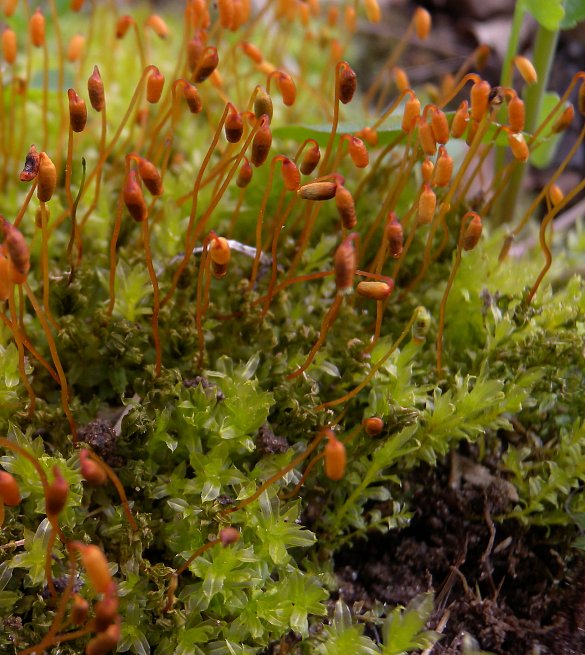
The leaves of both kinds of shoots have tips that are acute to cuspidate, and they have conspicuous midribs. These leaves have fine sharp teeth along their margins from about the middle of their length to their tips, otherwise their margins are smooth. The margins of leaves are also narrowly transparent-membranous. When they are dry, the leaves of this moss darken and become strongly crinkled; they straighten out and become smooth again with the return of moisture. The stems of both fertile and infertile shoots are light green and terete; both the stems and leaves are hairless. Each fertile shoot develops a nodding spore-capsule on a long stalk (seta) that is more or less erect. The stalk is light green, light brownish yellow, or light orange; it is 2-3 cm. (¾–1¼") long, terete, hairless, and smooth.
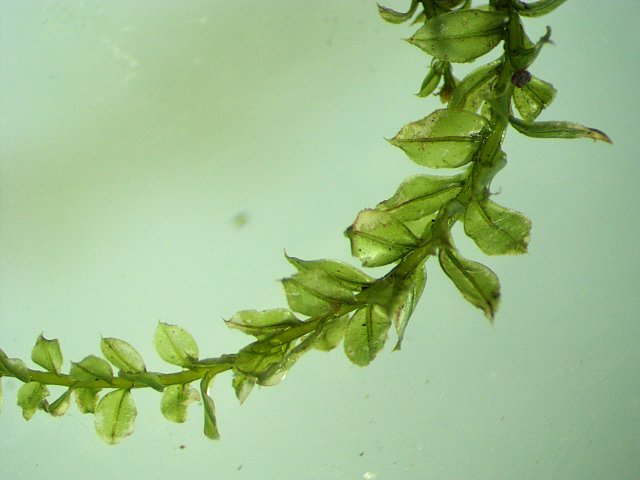
The spore capsule, including its lid (operculum), is 2–3.5 mm. long, ovoid to cylindrical in shape (depending on its maturity), and light green, light brownish yellow, orange, or brown (depending on its maturity). The lid of the capsule is short-conical with a slightly rounded tip. After the lid falls off, a ring of incurved teeth (peristome) is revealed along the upper rim of the capsule. These teeth are light brown and narrowly triangular in shape. The tiny spores are released to the wind during late spring. The root system consists of fibrous rhizoids that hold this moss in place.
Cultivation: The preference is cool weather, partial sun to moderate shade, moist but well-drained conditions, and various kinds of ground soil, including those containing loam, clay, humus, gravel, or sand. This moss also adapts to shady moist rock surfaces, especially if they are covered by a thin layer of soil. This moss dislikes full sun, high temperatures, dry conditions, and exposure to prevailing wind.
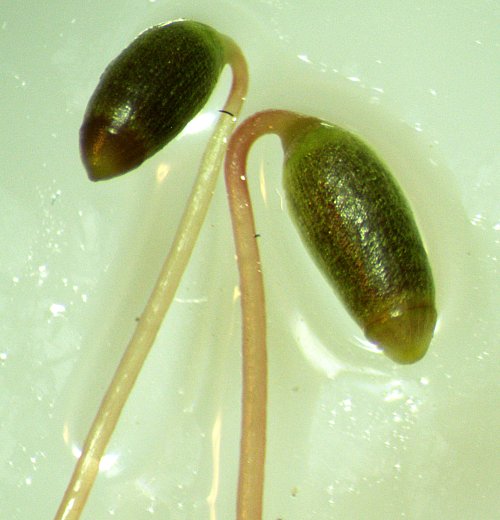
Range & Habitat: Baby Tooth Moss is quite common in Illinois; it has been found throughout the state (see Distribution Map). This moss is widely distributed in North America, Eurasia, and other continents. Habitats include ground soil in woodlands, ground soil of wooded hillsides, ground soil of wooded bluffs, shaded earthen banks along creeks, shaded ground under hardwood trees, logs and tree stumps in wooded areas, wooded ravines, rock walls at cave entrances, shaded sandstone and dolomite cliffs, algific limestone talus (in Jo Daviess County), rock outcrops in ravines, mossy rocks in stream beds, rocks near the head of springs, cemetery grounds, ground soil of urban parks, lawns, shaded areas along buildings, shady ditches, shaded roadside embankments, areas between parking lots and shrubbery, abandoned fields, pastures, mine spoil piles, gravelly hills near strip mines, industrial dump sites, and waste areas. While this moss is common in disturbed areas, it is also found in higher quality natural areas.
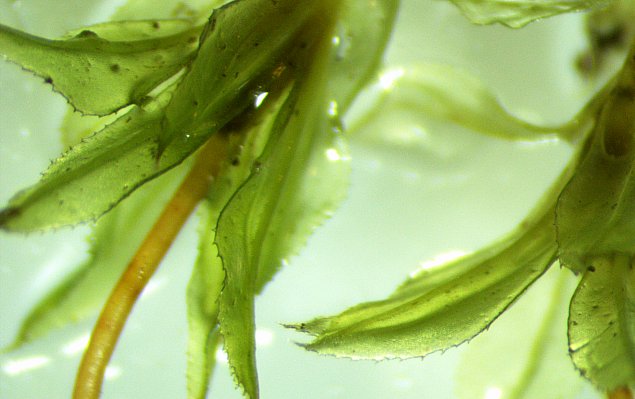
Faunal Associations: In part because of its ubiquitousness, this moss is often used by songbirds to construct their nests. It has been found in the nests of such birds as the Prothonotary Warbler, Barn Swallow, Carolina Wren, Cedar Waxwing, Eastern Phoebe, American Robin, and Wood Thrush (Blem & Blem, 1994; Breil & Moyle, 1976). Mosses are often used for the inner-lining of bird nests. The Four-toed Salamander (Hemidactylium scutatum) often uses shaded moss hummocks near water as the location of their egg nests. Baby Tooth Moss is one of the mosses that is occasionally found at this salamander's nest sites. The eggs are attached to the base of moss plants or they are attached to their rhizoids, usually within crevices of the hummocks (Wood, 1955).
Photographic Location: On ground soil at the Heron County Park in Vermilion County, Illinois, and along the north side of a building in Urbana, Illinois. Close-up photos were taken indoors using a microscope.
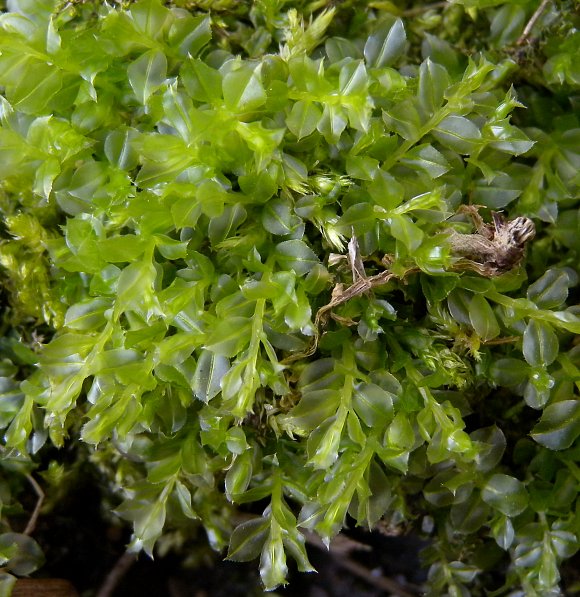
Comments: In Illinois, this is the most common tooth moss (Plagiomnium sp.) by far. Other tooth mosses can be distinguished from this moss by one or more of the following characteristics: 1) they have larger leaves, 2) their leaf margins are toothed along their entire length, 3) they have blunt teeth or very few teeth, and 4) more than one stalked spore-bearing capsule is sometimes produced from the same fertile shoot. Baby Tooth Moss is somewhat ornamental, resembling a small fern. Another scientific name for this species is Mnium cuspidatum, while alternative common names include Toothed Plagiomnium and Woodsy Thyme Moss (the latter is a British name).